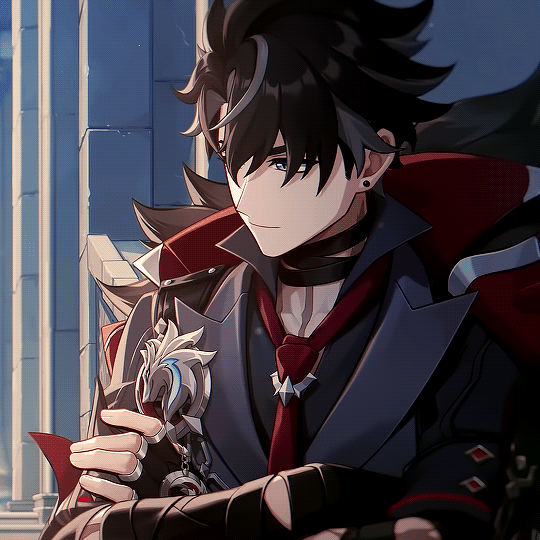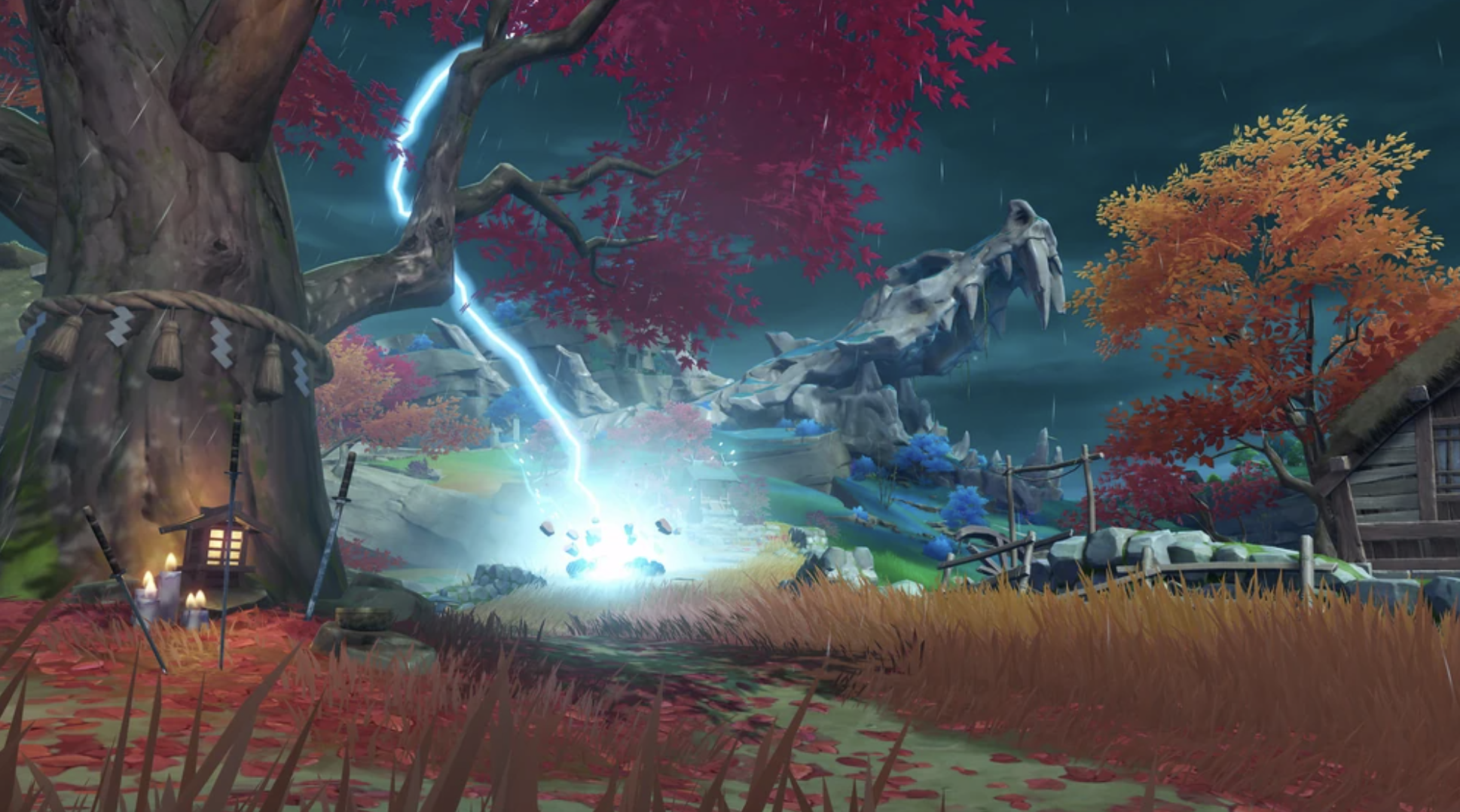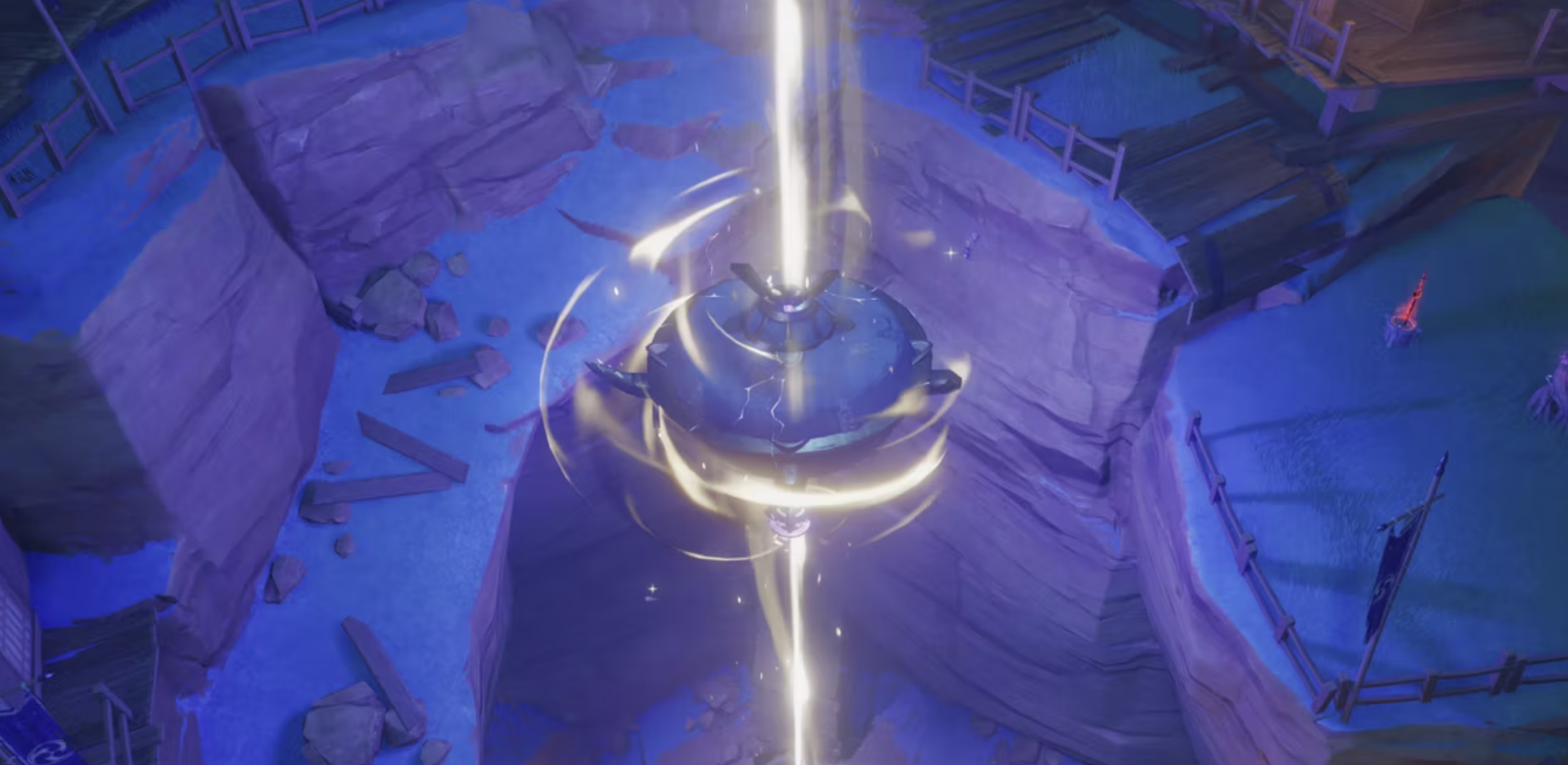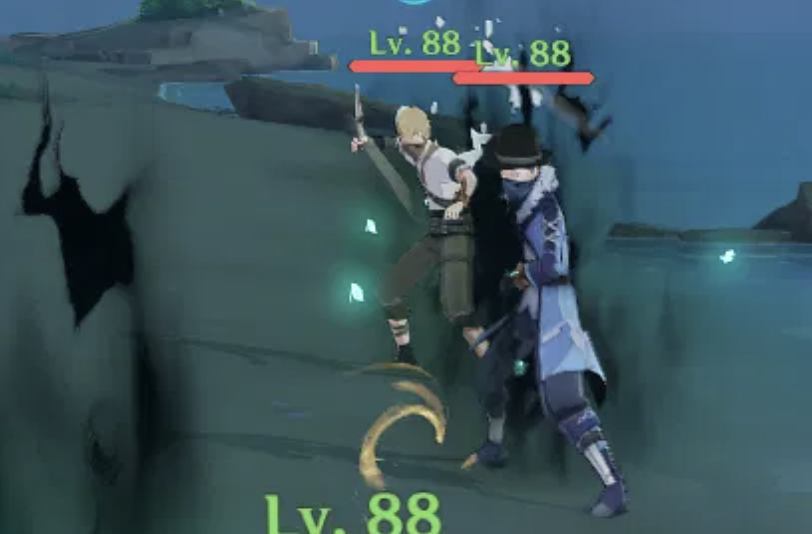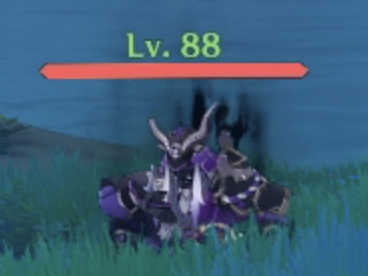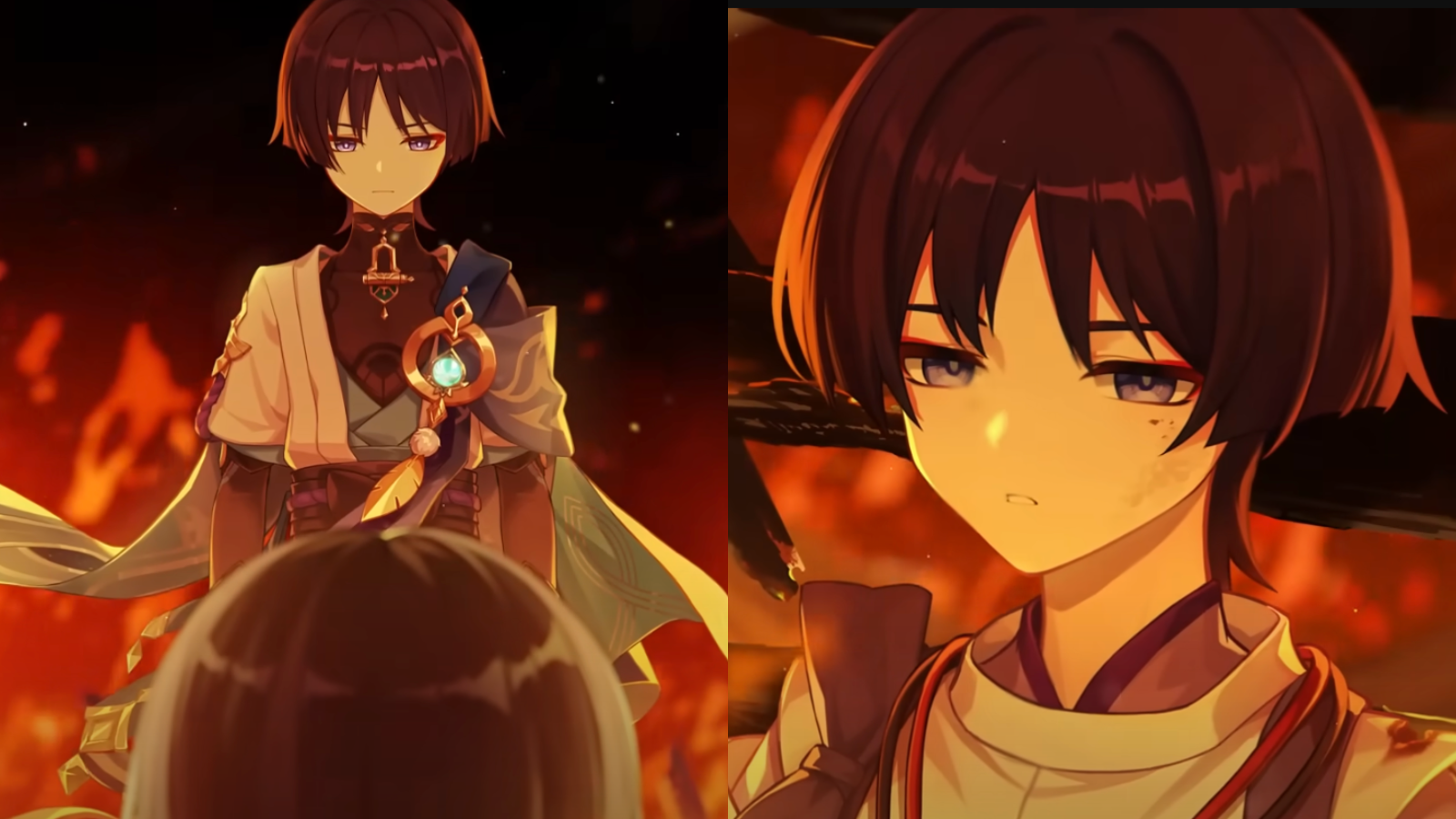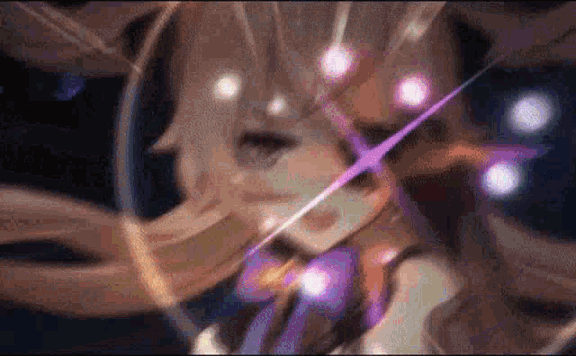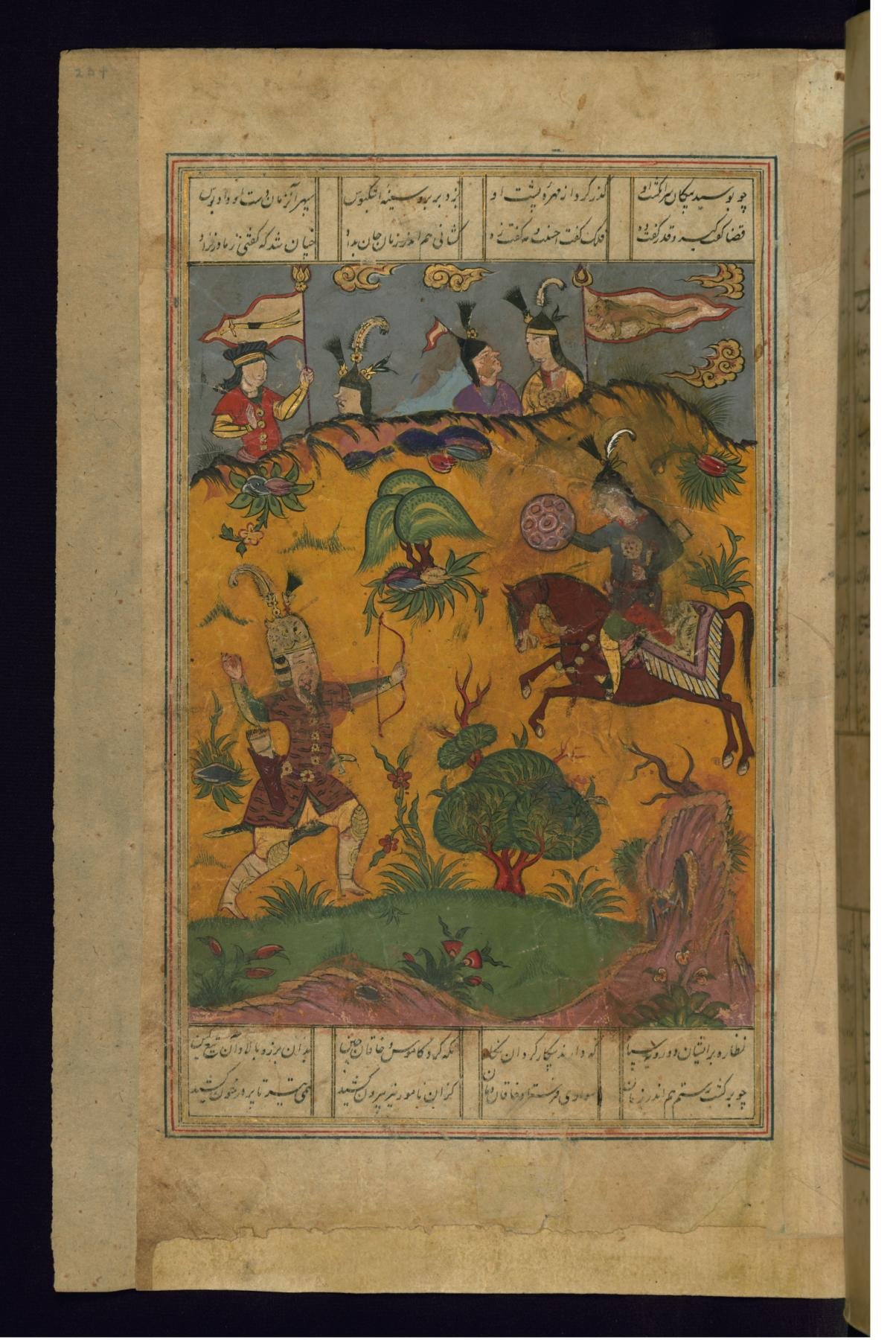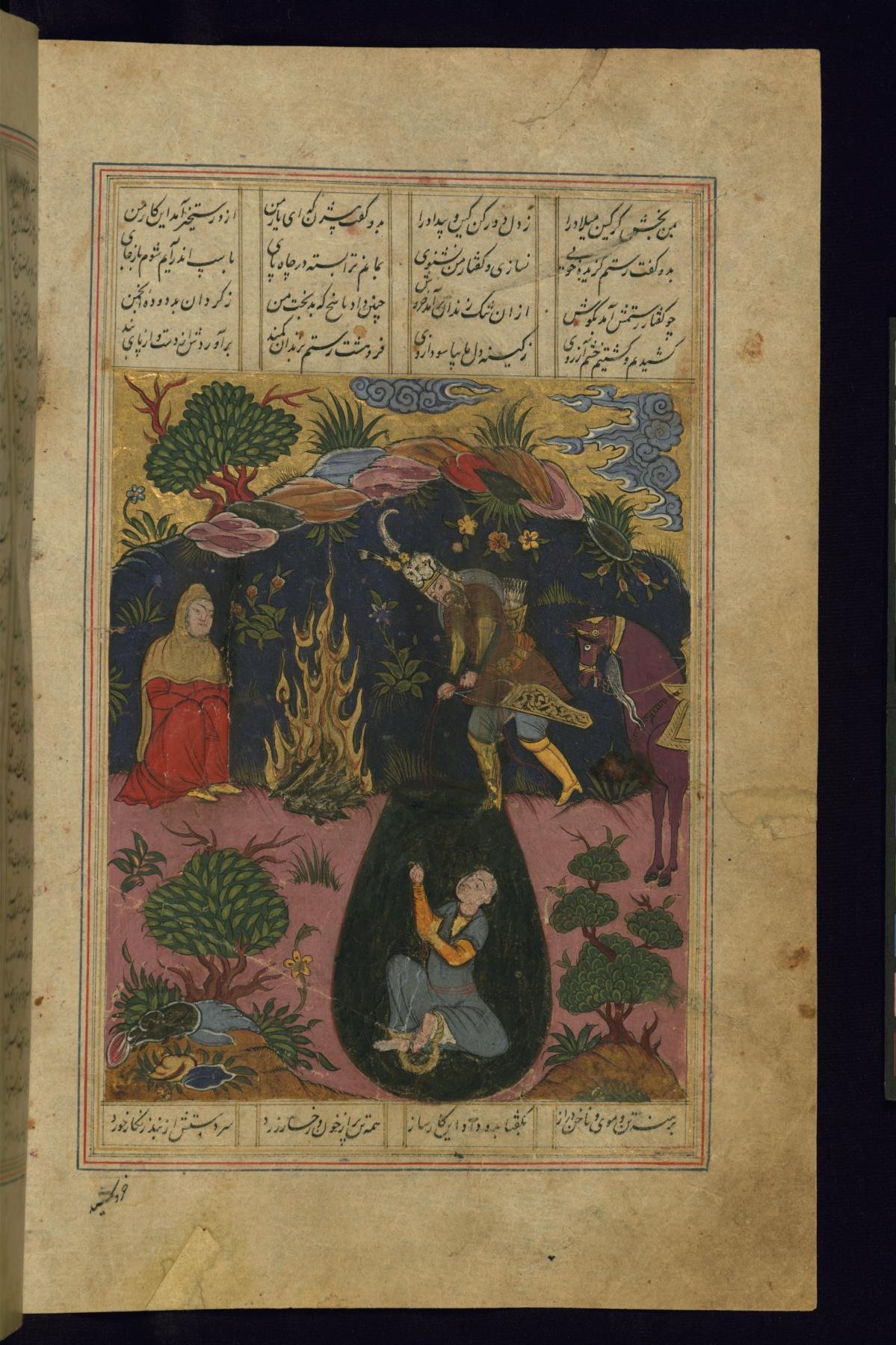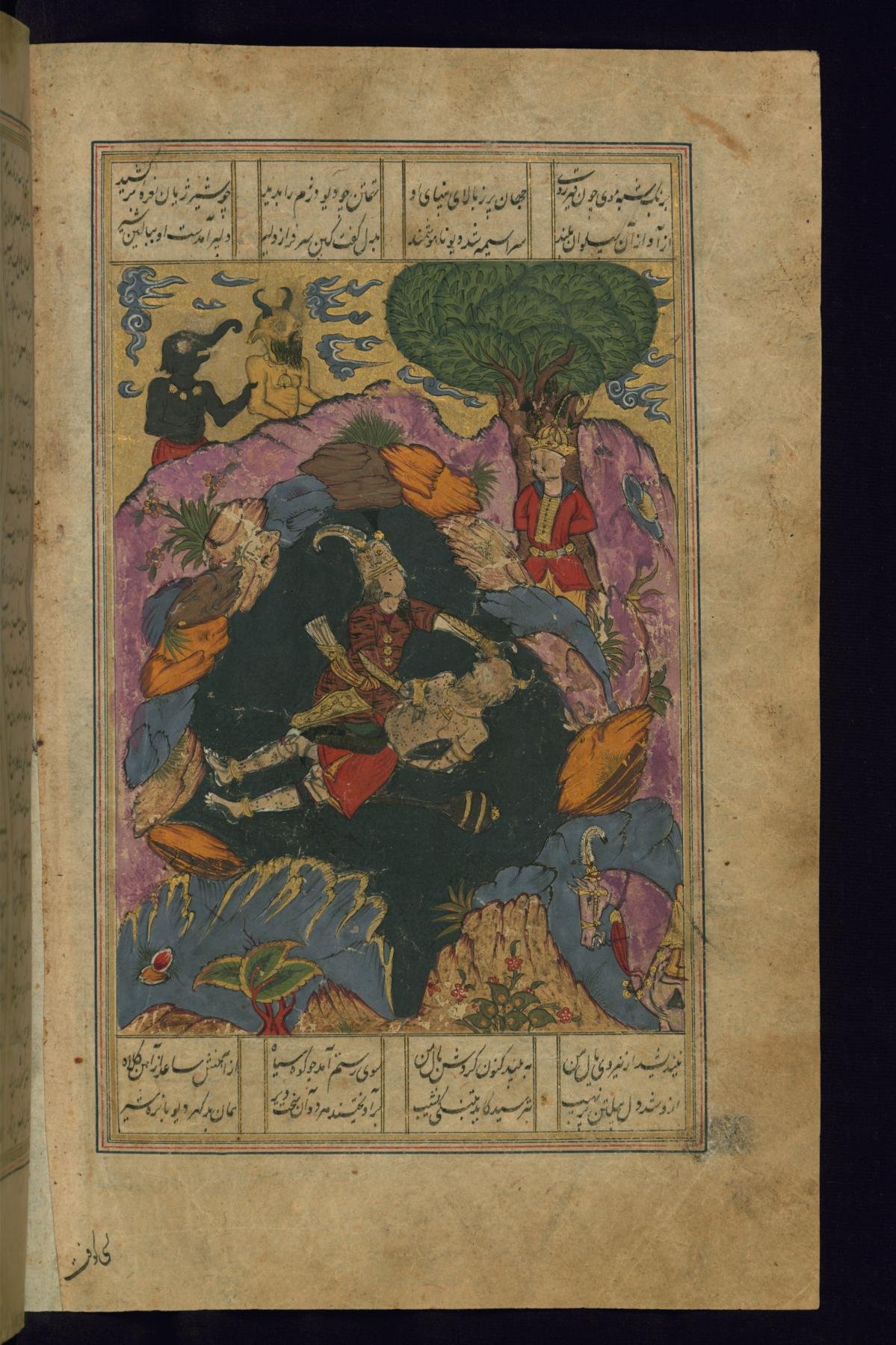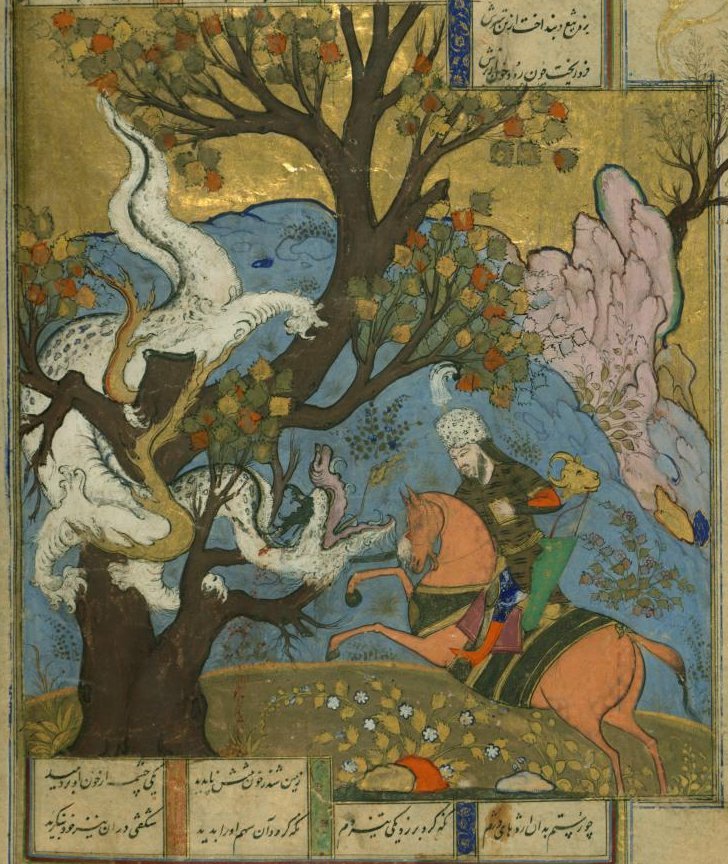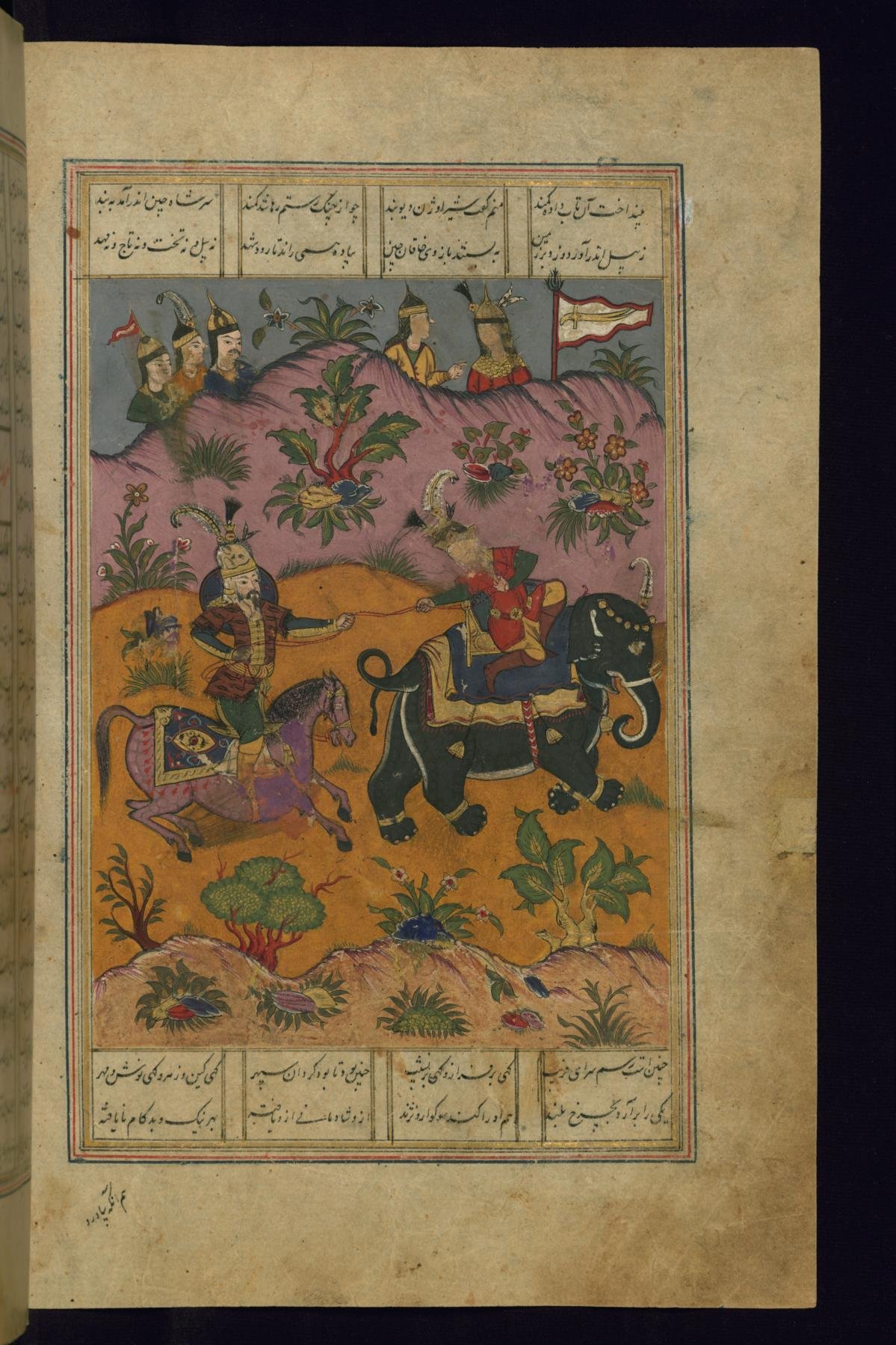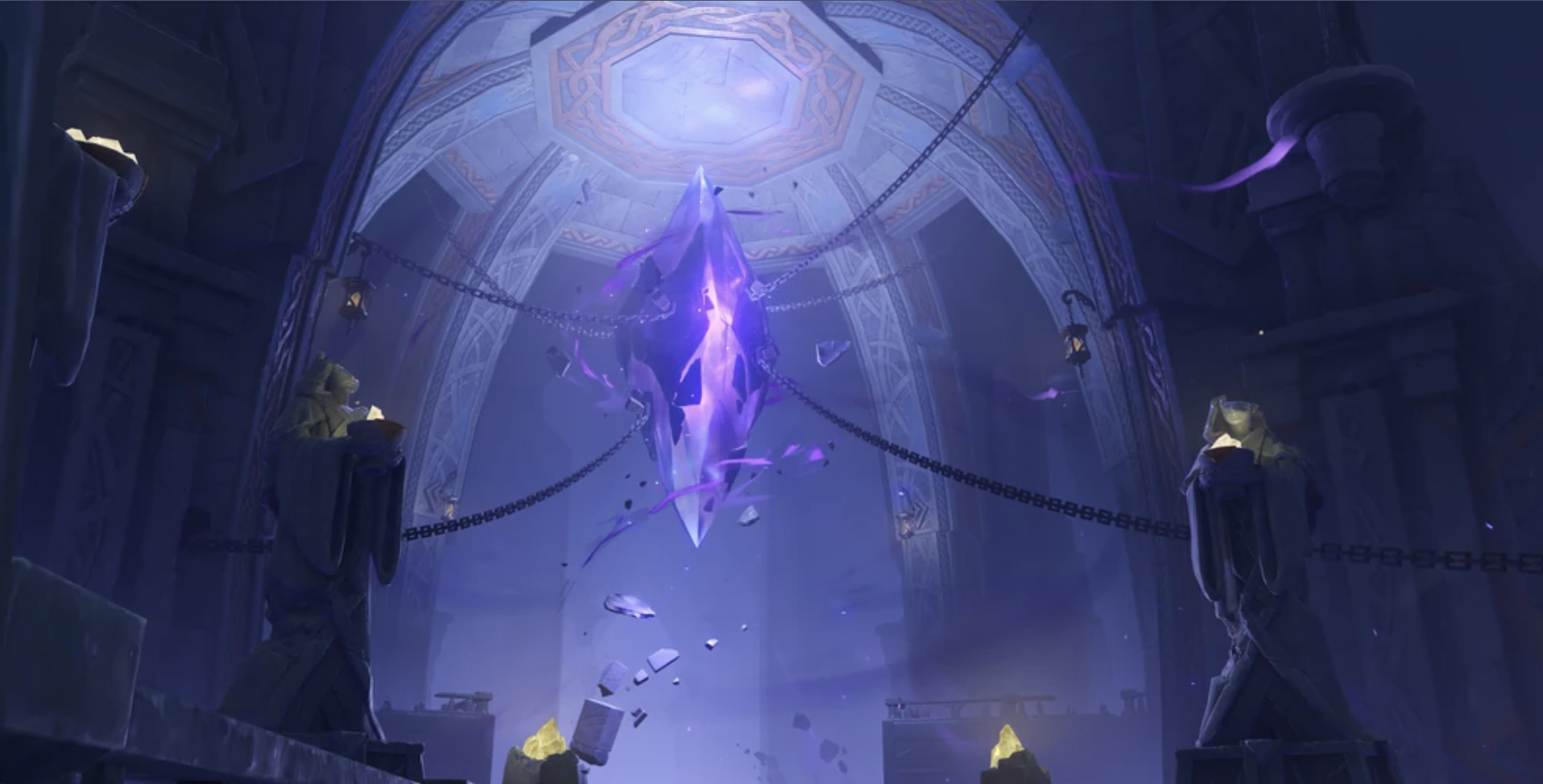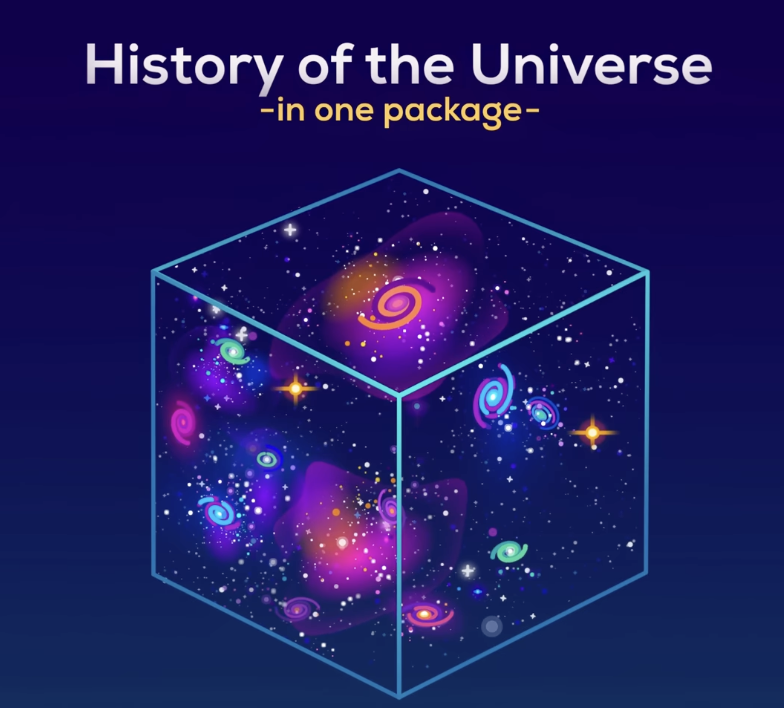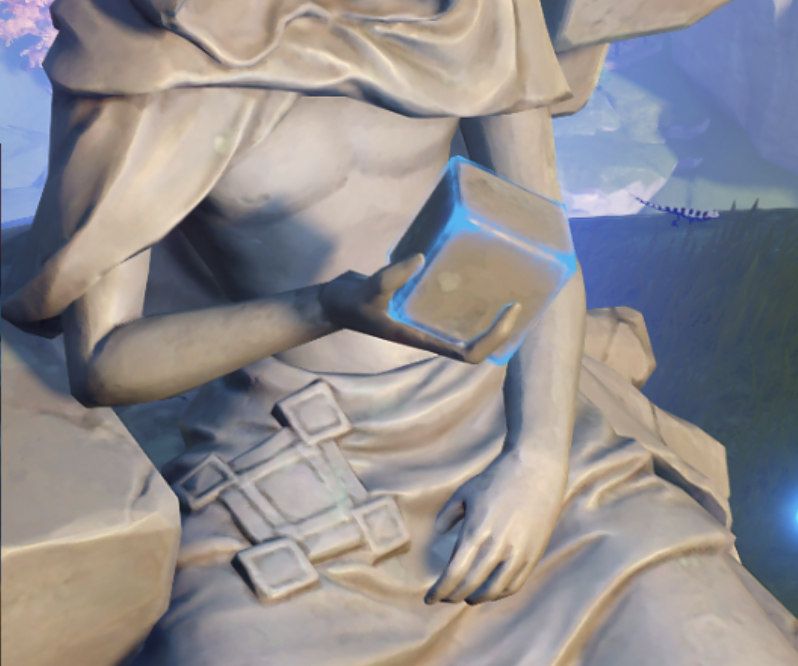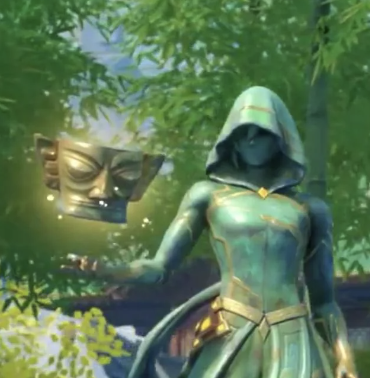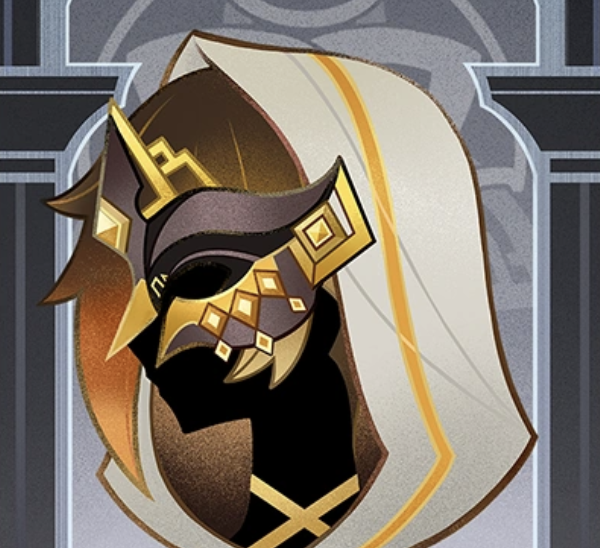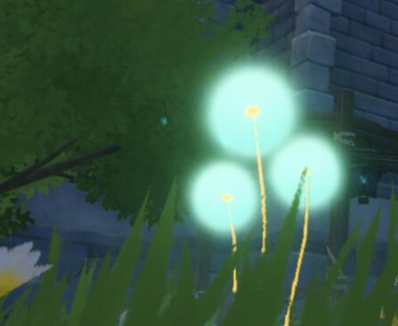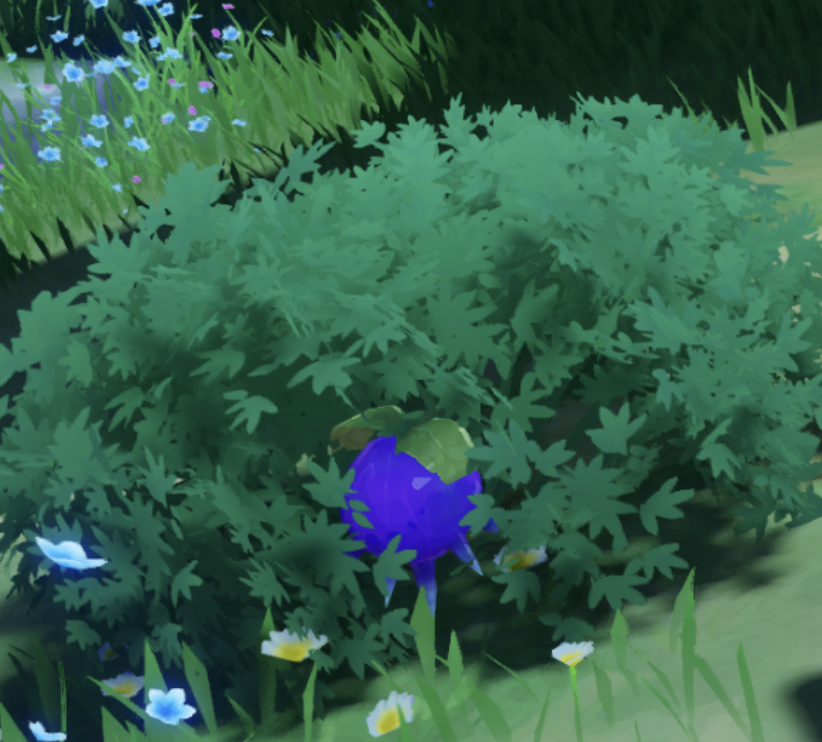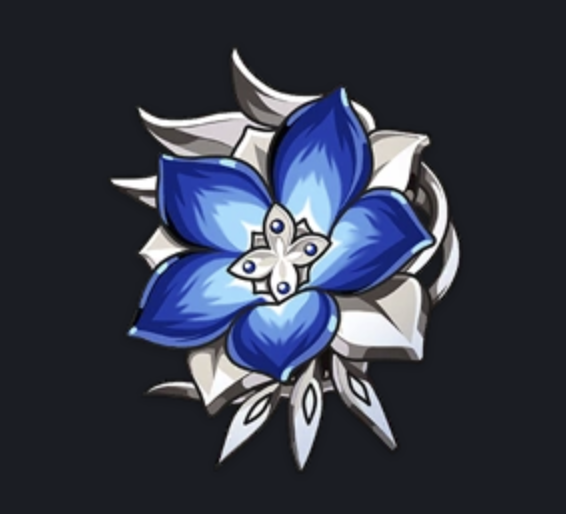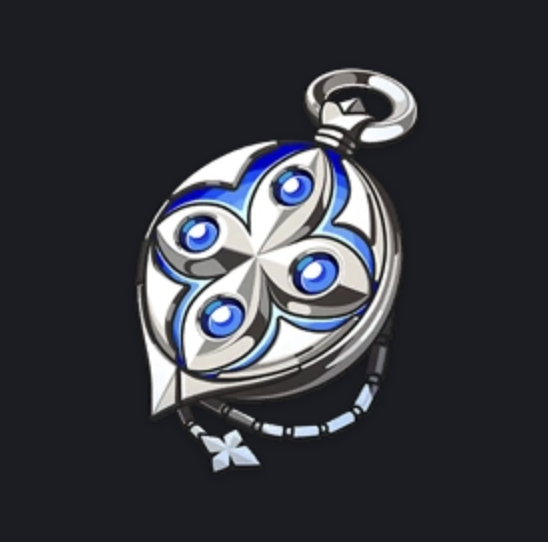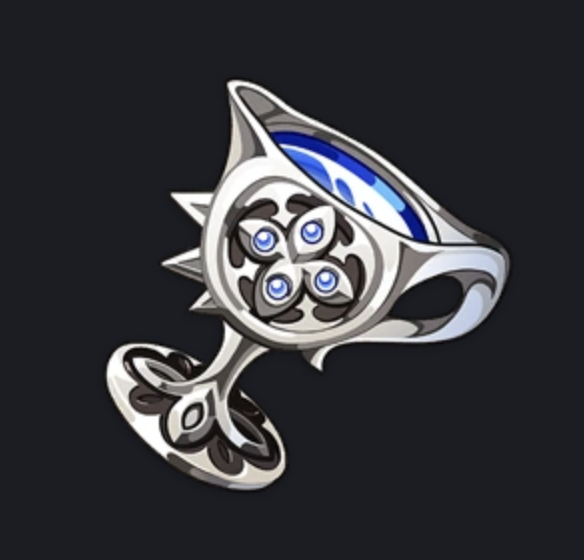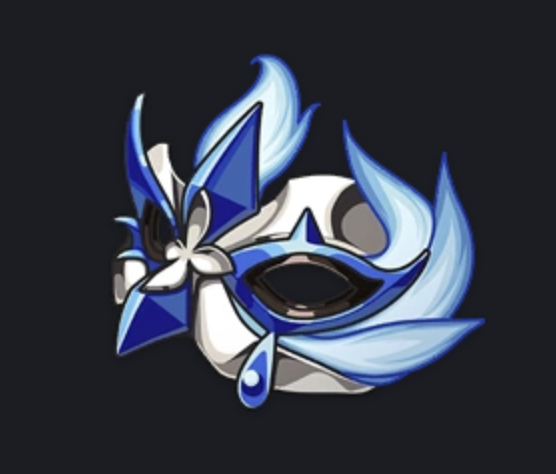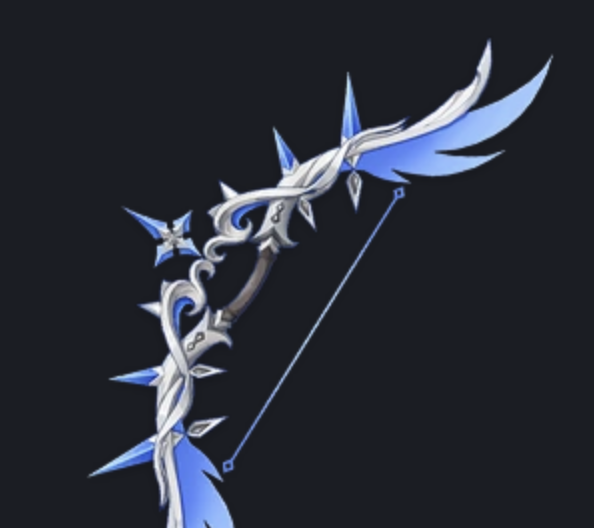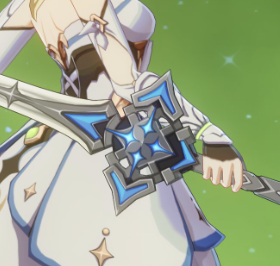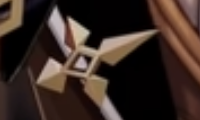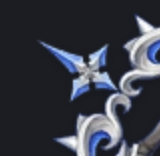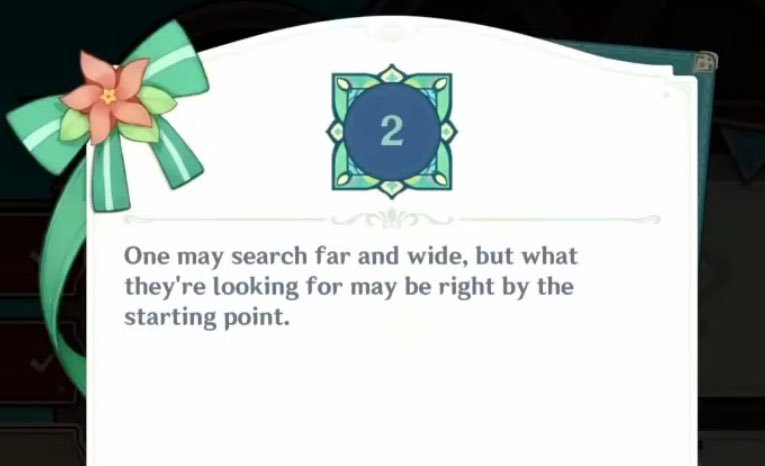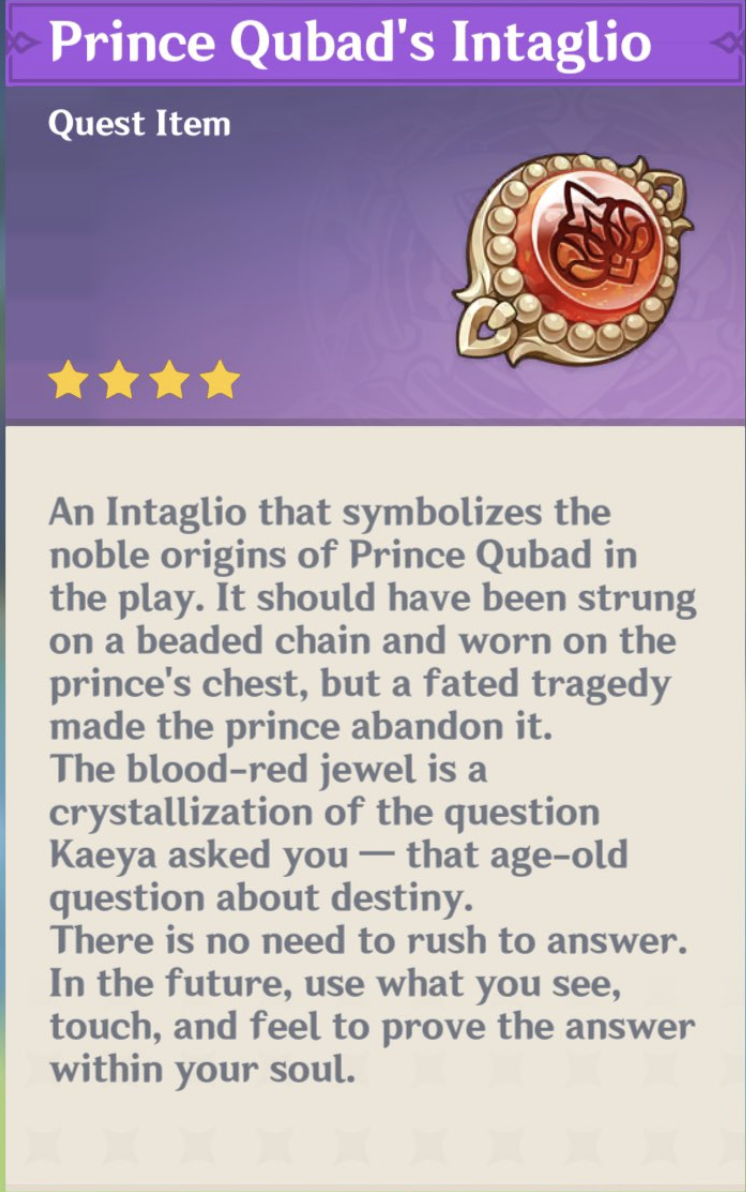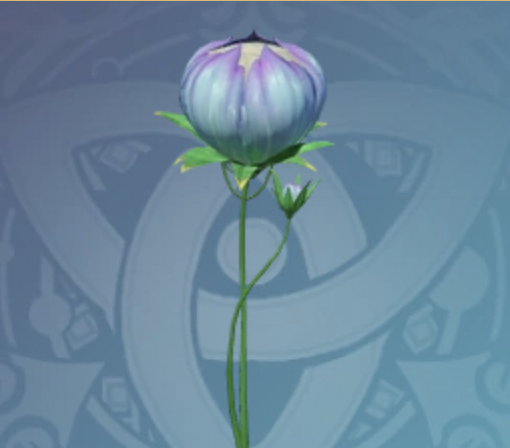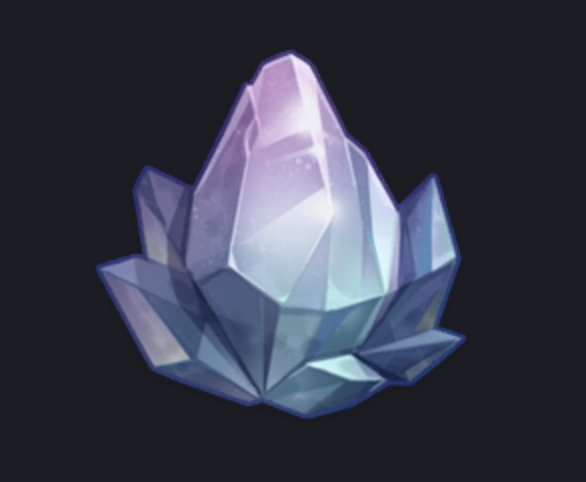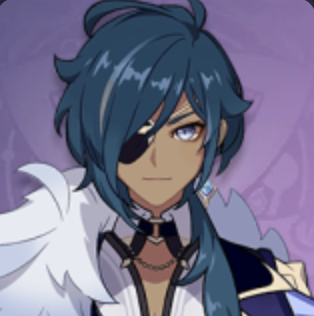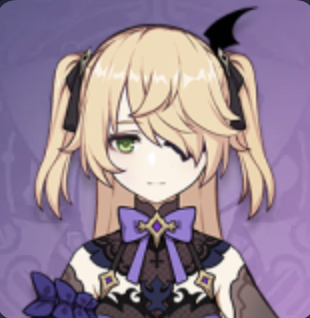The Gnosis Of Khaenri'ah
a kaeya theory
I believe Kaeya holds one of the keys to the fate of Teyvat: The Heart of Naberius.
This “heart” is the equivalent of a Vision, or in this case, a Gnosis he inherited from the fallen Kingdom of Khaenri’ah, and is why he is regarded as their “only hope.”
Note: Some videos might not load, I’m working on fixing this!
This “hope” of Khaenri’ah serves as a key that could open the doors of what I can only describe as Genshin’s version of hell and bring back to life a Kingdom that is currently “frozen in time.” Still, if Kaeya follows this path, he might destroy Teyvat… or get cooked in the process.
While the heart of this theory became the literal Heart of Naberius–I also found evidence pointing to Pierro’s ultimate goal, what the Intertwined Fate of Teyvat might be, and ultimately, to my despair, a lot of cooking dogs in a pot… stuff.
TW: Animal Cruelty? I hate it here.
Let’s start with the titular Heart.
Part 1 - The Warden of Hell
We first learn about the Heart of Naberius through Albedo’s Character Story 4. In it, we find out Rhinedottir has discovered this item and subsequently disappeared without a trace. As a final assignment, she tasks Albedo with finding “the truth and meaning of this world.”
纳贝里士之心
Nàbèilǐshì Zhī Xīn - Heart of Naberius
That might not seem like much to go on, but we can already understand the nature of this “heart” in the CN spelling (“之心”), which is precisely how they refer to 神之心 "Heart of God." I may have undersold this item by implying it could be a vision because this spelling would make it akin to a Gnosis. In other words, Rhinedottir has presumably found the whereabouts of the Gnosis of Naberius.
We know much more about the nature of a Gnosis now, too: They are fragments or remains of a Descender. The fragments that currently make up “The Seven” belong to the 3rd Descender and were handed out during the Archon War, while the Heart of Naberius is, apparently, an unaccounted-for 8th Fragment.
Let’s say we don’t take the CN spelling as a context clue, and the Heart of Naberius isn’t meant to be a Gnosis. The term “heart” is still applied to address a “vision.”
In Mona’s Voice Line - About A Vision “Disdain,” Mona recalls the moment Barbeloth gifted her the hydro vision while saying, “...may your heart of truth be with you.”
In Mona’s Character Story “Vision,” she also mentions that the “final truth” of the world is hidden among the sea of stars, which I believe is shorthand for the sea of people currently living on Teyvat and the individual dreams and ambitions they carry.
There’s also a great video by Ashikai that goes a lot more deeply into the relationship between visions and hearts in the context of Xianxia (which is probably the high-fantasy genre Genshin draws the most inspiration from) and you should definitely check it out here!
Let’s jump to the second clue about the nature of this item: Naberius.
The Demon Naberius
Naberius depicted in the Dictionnaire Infernal by Jacques Collin de Plancy (drawing by Louis Le Breton, engraving by Jarrault)
“Naberius [Naberus], alias Cerberus, is a valiant marquesse, shewing himselfe in the forme of a crowe, when he speaketh with a hoarse voice: he maketh a man amiable and cunning in all arts, and speciallie in rhetorike, he procureth the losse of prelacies and dignities: nineteene legions heare (and obeie) him.” - Johann Weyer (1583)
Naberius is a demon mentioned in the Ars Goetia, a Marquess of Hell described to appear as a three-headed dog or raven. This alludes to Genshin’s version of the Greek “Cerberus.” So let’s talk a little bit about the role of Cerberus, the ways he’s been depicted in the game so far, and eventually we’ll circle back to that “raven” bit.
In Greek mythology, Cerberus is the guardian of the gates of the Underworld, referred to as a “hound of Hades,” where Hades is both the God Hades and the word for a realm of the dead or underworld. Now, a lot of people think Cerberus is there to prevent others from entering the Underworld, but his job is actually to prevent the dead from leaving.
In Genshin, we’ve seen artistic depictions of Cerberus in the Fortress of Meropide.
In the same way that Khaenri’ah was an underground nation of humans, composed mainly of Teyvat’s exiled sinners, Meropide is also a land of exiles confined to live underground due to being sinners. That’s not to say Khaenri’ah is a nation composed of criminals, but going against Celestia qualifies as an equivalent. Meropide even shares the colors, design motifs, and functions of Ruin Guard factories–complete with its own Mech-Production facility–and their overseer, who is referred to as a “Duke” (sure?), is a cryo vision-wielder with rather wolfish or dog-like traits.
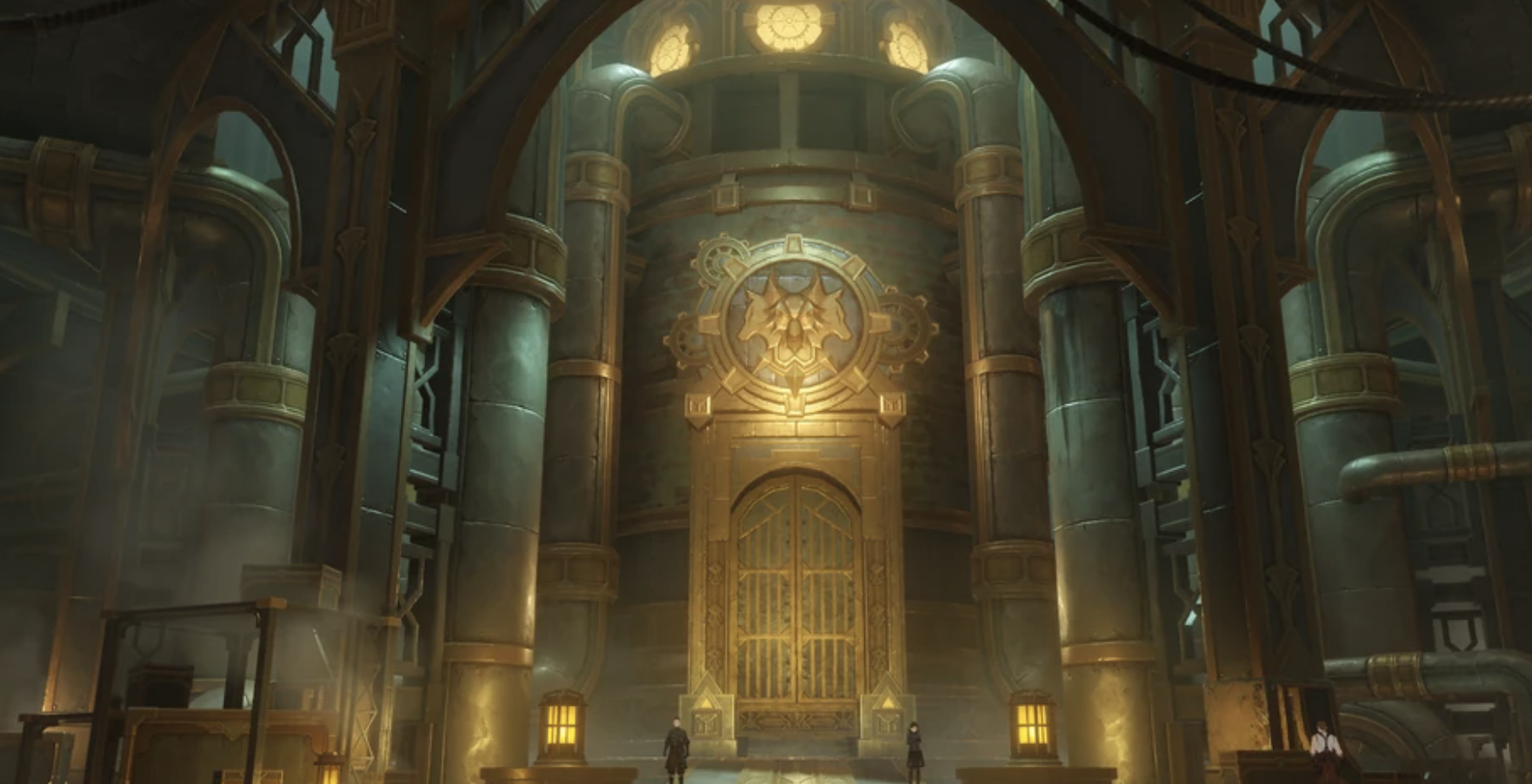
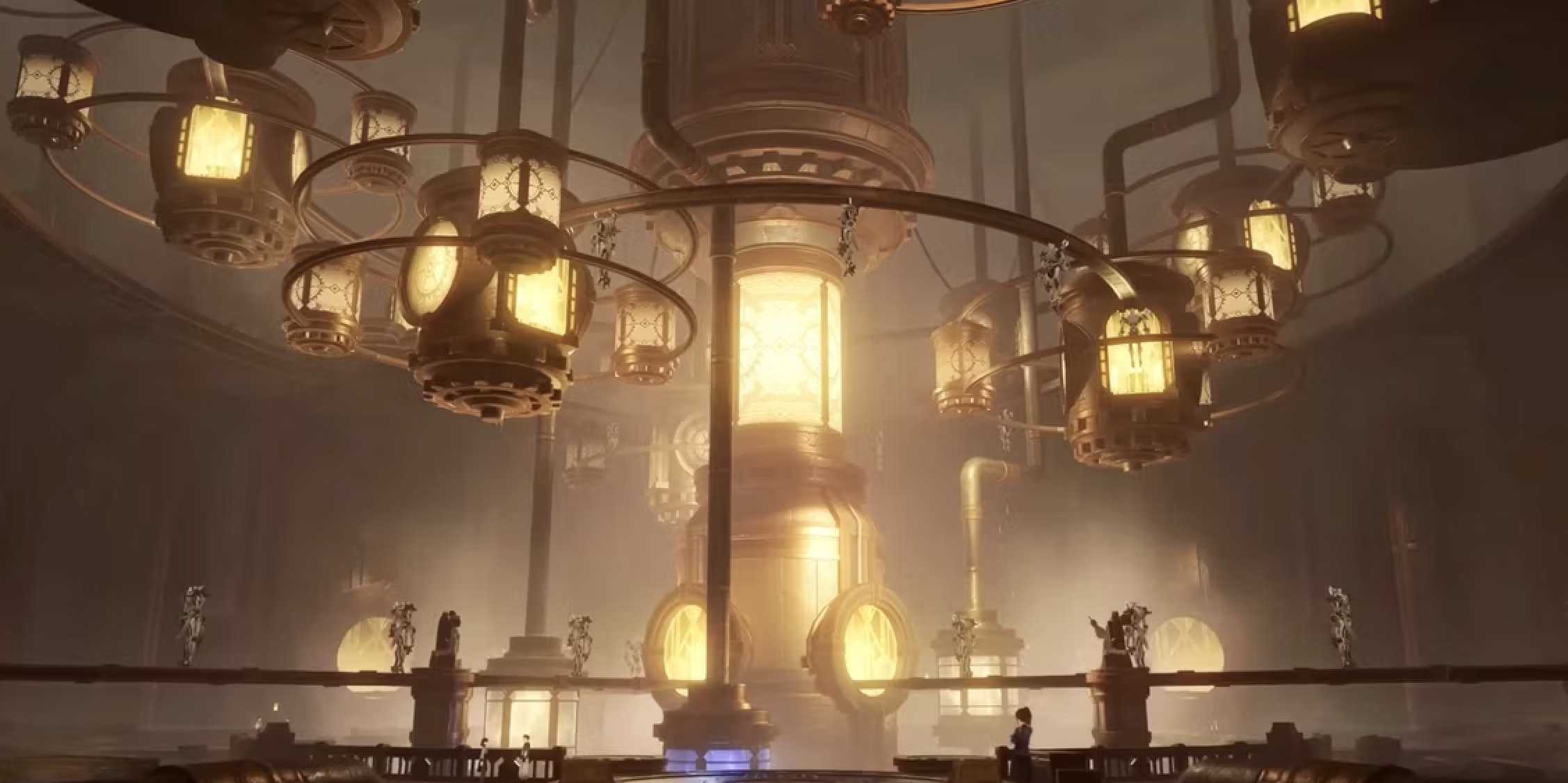
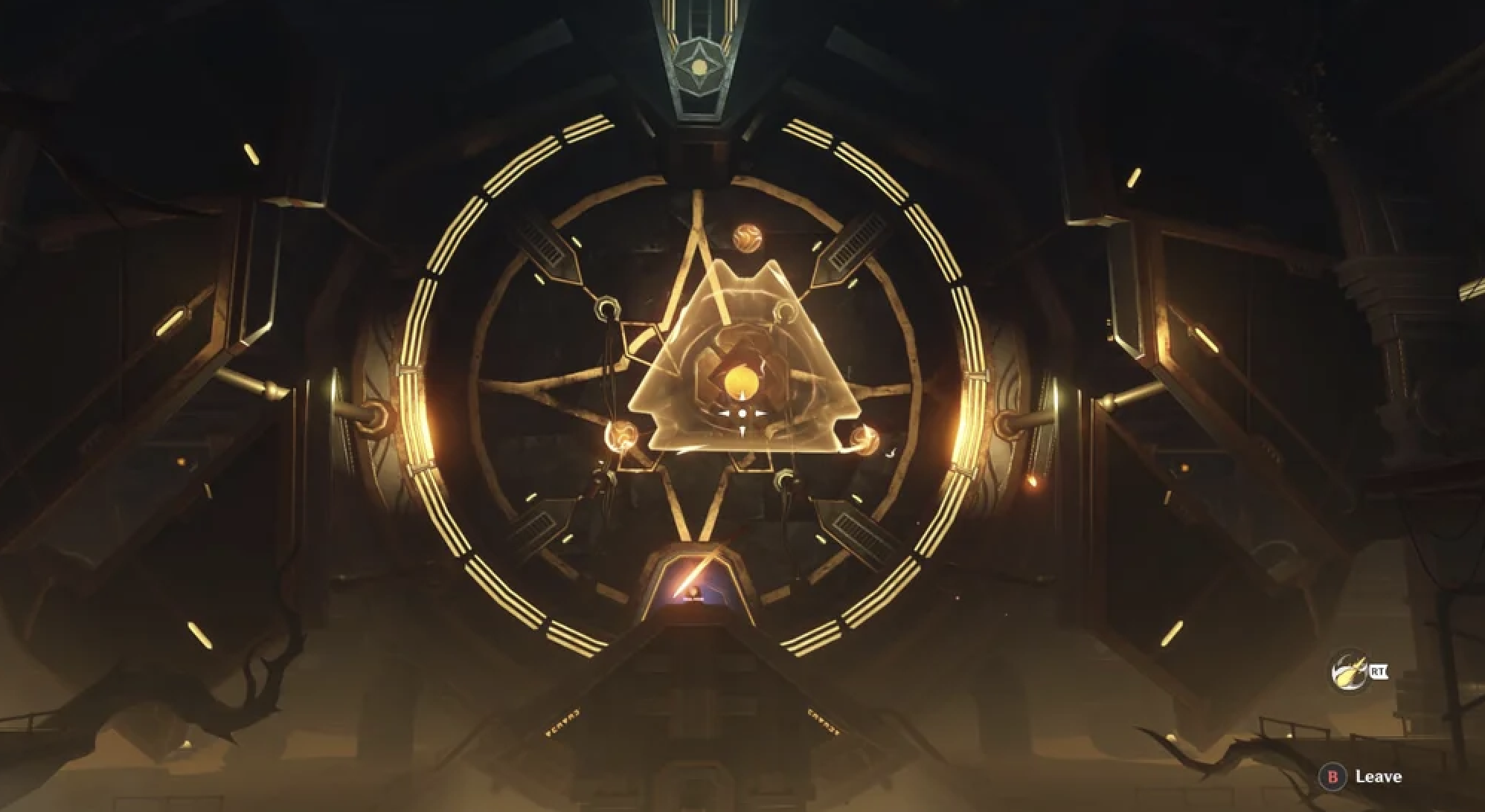
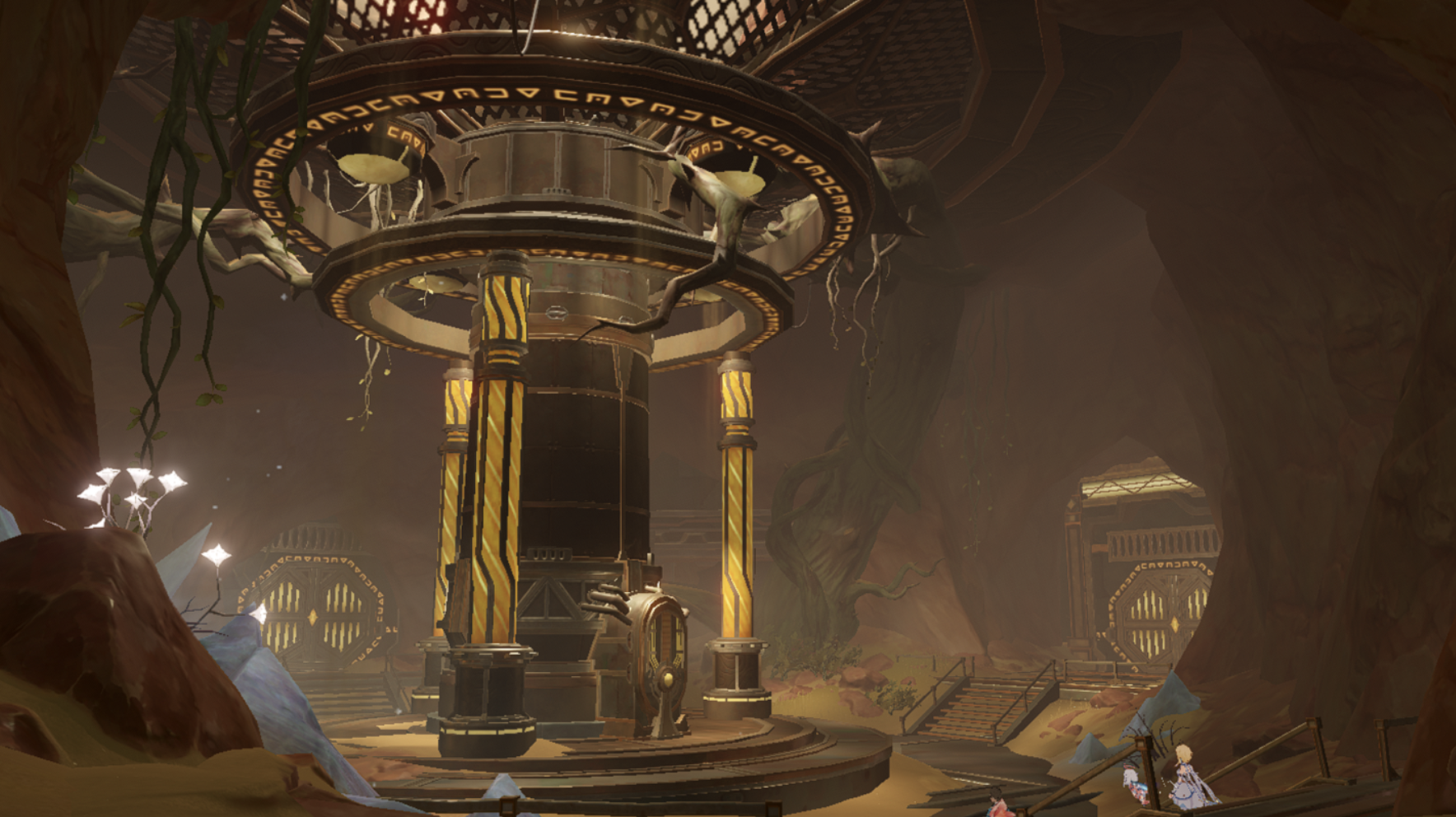
Wriothesley is essentially the royal “Guard Dog” of Fontaine’s “Underworld,” whose job is to ensure criminals can’t escape. This is why the symbol in his office is the three-headed Cerberus or Naberius. It’s also his constellation.
I want you to pay attention to this whole “wolf” or “dog” with “cryo” themes because it’ll be a thing.
If we think of Naberius as the royal guardian of the Underworld, then the only Underworld “door” in this context that has been sealed to prevent “something” from escaping is the Door to Khaenri’ah. Khaenri’ah fits the role of Underworld thematically and has an achievement you get when you reach it that directly quotes Dante Alighieri’s Divine Comedy: “..Abandon All Hope, Ye Who Enter Here.” This is a reference to a moment in Canto III: Vestibule of Hell, wherein Dante passes through the Gate of Hell.
Edit by: Shrewd Kira
In Genshin, there is another important reference to this potential 8th Gate (of Hell) that requires an 8th “Remembrance” key to unseal it.
In Wuwang Hill, we find the Hidden Palace of Zhou Formula, which quotes:
“There is a secret ritual that can conceal one gate out of eight, cutting off the route for evil to escape. This ritual was performed here long ago, sealing demons within this labyrinth.”
Without getting too deep into the alchemical and mystic roots behind Adeptal Arts, the Zhou Formula itself relates to the creation (or extraction) of Stones of Remembrance, which we later obtain from Zhongli’s Statue.
The description of the item reads as follows:
An unusual gemstone capable of removing a seal somewhere. You can feel the turbulent thoughts racing relentlessly within when you hold it in your hand. Somewhere in this world are buried the memories of an ancient war.
And if we go to Neuvillette’s “Vision” character story, he calls the seven gnoses the “seven remembrances.”
Now, “dreams” and “memories” are not the same. We have another orb that is similar to the “stone of remembrance” called “orb of the blue depths” described as:
A strange gem left behind by a foe from the Abyss. If you look into it hard, it is almost as if you are looking into a long-borne dream shrouded by a deep fog.
I’d also like to highlight how, in the same way, Zhongli’s stones of remembrance are meant to unseal the 9 Pillars of Peace; there are precisely nine orbs of the Blue Depths meant to open secret gates in the Chasm. Teyvat might have seven remembrances, an unaccounted (likely hidden) 8th remembrance, which is the subject of this theory, and a 9th forgotten remembrance. I’ll tackle that one in another theory. For now, let’s continue with Kaeya’s “heart”.
In the event “Unreconciled Stars,” fragments or “meteorites” fall on Earth and drag everyone into a “sleeping sickness.” And there’s even a moment where Fischl refers to the largest meteorite as the “star of destiny” and “the very heart of darkness.”
If a dream is like a seed of hope, then a curse would be akin to a seed of regret: It’s only dark because the dream or ambition has been left unfulfilled to the point of obsession. This theme gets echoed in the language behind “god remains” and “curses.”
The description for the Domain of Guyun reads as follows:
Delusions and disappointments of an ancient ambition to lead humanity are gathered here. It refuses to give up on its lofty ambitions, though it is now consigned to fester in the cavernous depths of Guyun.
Speaking of festering, the description for the limited-event sword Festering Desire reads as follows:
Unborn life, unfulfilled wishes,
Tragic dreams at the edge of the universal darkness that could never come true,
Indwell my body, and descend unto this world.
One is a “regret” sealed in a domain (thank you, Deus Auri), and the other is a “free” sword wreaking havoc. Both are unfulfilled dreams that behave like curses.
A memory from the Frostbearing Tree gives us a formula to craft the Frostbearer catalyst, described as
A fruit that possesses a strange, frosty will. A faint sense of agony emanates from it.
This tree entreats us with avenging Sal Vindagnyr…
To the one who can render recompense upon this poisonous world shall it go,
And may they carry my innocent, bitter fruit as they enact justice.
Poggers. We resurrected a Curse Tree.
Another example is the Tatarigami, born from Orobashi’s resentment, which manifests as a black aura around enemies on the island. The only thing capable of containing this “curse” energy is the Mikage Furnace.
This starts giving more weight to the role of Yakshas: they’re essentially acting as “living furnaces” to absorb the Tatarigami of not one but multiple dead gods. Their karmic debt accumulation also shows up as a black aura.
As Skirk said, a person's death will turn their bonds into "curses."
This is why I believe The Heart of Naberius is a Gnosis; a “Heart of Darkness” from a Descender whose dream was left unrealized. A curse that, if released, will unravel Teyvat.
It’s a God-Level Delusion and the key to unlocking the gates of Hell.
So why would Kaeya have it?
The answer lies in the memory of wolves.
Part 2 - Hidden Memories
In Genshin Impact, animals are often used as metaphors for nations, characters, or the “roles” they might play. My favorite instance is when Scaramouche gets depicted as a black cat in a fable during the Inversion of Genesis quest.
Right before the “cat in a fable” scene, Scaramouche entered Irminsul and attempted to erase himself in order to change the fate of Niwa. Some think this entire quest was pointless because Scaramouche didn’t accomplish his original goal: to prevent the death of Niwa. And that’s fair, but I disagree.
Inversion of Genesis provides one of the most important clues regarding the endgame of Genshin Impact. Because what matters here is not what allegedly failed; it’s what succeeded.
Teyvat doesn’t remember “The Kabukimono” or “The Balladeer.”
But “The Wanderer” didn’t cease to exist.
It’s not the first instance where we see someone get “erased” from the memory of the world (we’ve already witnessed Nahida “erasing” Rukkhadevata), but it is the first instance where we see their “past self” turned into a “memory” preserved in a fairy tale and then “reunited” with its host.
Let’s hone in on this part for now: Memories are one of the aspects that make up the complete “Self.” Another part would be the “dream”. These parts are sold stored separately. The point is there are several parts, but this quest focuses on memory, and this might explain why the perfect antagonist for Inversion of Genesis was Dottore. Here is a man with multiple “selves” classified as Dottore Segments, and all of them embody a “moment” or “memory” of his “self” that’s been “frozen in time.”
I’m particularly interested in the retrieval method in question–because as the game goes on and more stories show up that revolve around “splitting” your identity or “converging” two identities into one, or hell, becoming a Tulpa, or an Egregore of identities–Hello Rene, you Daffodil Dragon you–the fact that a seemingly innocent fairy tale could be housing a component that makes up someone’s “self” is a terrifying thought.
I also want to point out Scaramouche made an attempt to “save the past,” and yes, his hubris failed, but Nahida wrote his memories into a fable and was able to retrieve them with the help of a “witness to the truth” who could connect the missing dots.
Nahida’s plan effectively “saved the past” Scaramouche from disappearing altogether.
Having overcome his past delusions, a “reforged” Wanderer/Scaramouche gains an Anemo Vision and goes through a “rebirth.” We even get to baptize him with a new name.
I called mine BBgrlCanDoNoWrong.
And this idea of baptizing with a new name upon “awakening” isn’t exclusive to this moment: When the Adeptus Pervases was “illuminated” by Zhongli, he was granted a new name.
Barbeloth was Mona’s teacher and gifted her both the hydro vision and her current name of address: Mona Megistus.
We even have a case where Amy reads a book, gains a vision (along with her new flying companion Oz), and essentially renames herself, Fischl. Damn, even Jesus had to get baptized by his cousin John. Yo Amy, chill.
The Fischl story, in particular, is relevant to this theory because whatever she extracted from “Flowers For Princess Fischl” might not even be a memory that belonged to her.
The point is there are forgotten memories peppered throughout Teyvat tucked between the pages of fairy tales, just waiting to be reunited with their host. These memories might be the real reason the Abyss Order is hunting down all these books, and there is one book in particular that the game keeps drawing attention to.
The Boar Princess
In the myths of ages past, every living being in this world had its own kingdom.
Mondstadt was a forest in that age, a playground of the boars. In the forest was the Boar Kingdom, where everybody lived happily under the reign of the Boar King.
Part 3 - Kaeya, The Wolf Pup
In The Boar Princess, we are introduced to a carefree wolf pup. One day he runs into an evil squirrel sorcerer who despises everything joyful and beautiful and is unable to tolerate a happy and carefree wolf; so, he curses him. Ok, technically, the wolf swallows him, but the squirrel tried to curse him first, so the asshole squirrel had it coming.
Woobakwa
The evil squirrel is possibly inspired by Ratatoskr from Norse Mythology—a squirrel who runs up and down the world tree Yggdrasil to carry messages between the eagles perched atop Yggdrasil and the serpent Níðhöggr, who dwells beneath one of the three roots of the tree.
It shares an etymological root with “Traveler”, so there’s a possibility this squirrel represents an “Abyssal” or “Magic” Traveler that must get eaten for the curse to take effect.
The pup's heart ends up pierced and frozen by an icicle, and he transforms into a mean and selfish wolf. Fairy tale things happen, and the pup eventually moves to the North, alone, and what follows is an effort from the kind Boar Princess to try and befriend him and thaw his heart with one of the most Grimm(™) outcomes. The Boar Princess thaws the Wolf’s Heart by sharing a lovely meal in which her friends are the main ingredients.
If animals are memories, then these memories get cooked in a pot to restore the heart of the Wolf. This is already fascinating when you consider how the wolf's heart in the TCG card of The Boar Princess is represented as the 8-pointed “Star.” This is an excellent wink from the game toward understanding the nature of the “Cursed Wolf Heart” of Khaenri’ah.
Kaeya qualifies to me as the Wolf Pup in this tale, he’s still in the “Forest of Boars” (which represents Mondstadt), and while he may have already encountered the evil squirrel, he still hasn’t swallowed the curse—but there’s another reason this story calls my attention, and it’s the reason why it’s commonly linked to the Tsaritsa. Considering Pierro’s plan is to create a new world from the ashes of the old world, the Tsaritsa, willing to sacrifice her people for the cause, is taking on the role of the Boar Princess.
Pierro is living with a curse in Snezhnaya. The North.
And wouldn’t you know it? He is also called the “wounded wolf” in Polar Star's description.
“I was once a wounded wolf, betrayed by the whole world,”
“But we shall create a new world, one in which no one shall ever be forsaken.”
The idea of a Wolf who’s had his heart frozen and had to move away from his homeland is shared with Kaeya to a lesser extent; in Kaeya’s case, the curse of Khaenri’ah hasn’t taken root, but his heart did have a moment where it “went cold” to the point that it earned him a shiny new cryo vision.
Still, most people, including myself, would be hard-pressed to connect Khaenri’ah to wolves merely with this fable. The story is considered an origin myth for Andrius, the North Wind of Mondstadt. It’s easier to draw a parallel to Snezhnaya and Pierro exclusively since we know Khaenri’ah was to the southwest of the map, beneath the hottest region in Sumeru. We even found the Door to Khaenri’ah there.
But who else is a Wolf Pup in Mondstadt with ties to Sumeru? Rostam. For some reason, unlike anyone else in Mondstadt, he’s the only character pulled from the Shahnameh or Epic of Kings.
If not to draw attention to a shared heritage, why is the “Wolf Pup” of Mondstadt named after a figure from a Persian epic?
In most instances, Rostam undergoes “Seven Labors,” seven complex tasks accompanied only by his faithful and sagacious steed Rakhsh. Another mythical figure who undergoes a certain amount of “Labors” with a trusty steed is Hercules.
Rostam and Rakhsh. Hercules and Pegasus. Odin and Sleipner? King Irmin and whoever his steed might turn out to be?
I think it’s hilarious that another potential nod to Kaeya still being in the “Wolf Pup” stage could be how he currently doesn’t have his cavalry. Varka, get back here!
Part. 4 - Endless Echoes
In the Temple of the Wolf, there is a particular song titled “Endless Echoes” that only gets played in key instances or domains: The Temple of The Wolf, The Ruins of Eya and Thermadon, The Peak of Vindagnyr, Kaeya’s Story Quest: Lost Treasure of Arcadia, and Xiangling’s Story Quest: Secret Ingredient.
I could wax poetic about why all these places have Khaenri’ah themes or Kaeya in common–from being icy ruins to one being his literal story quest–to how it’s one of the few tracks in the OST that has electronic components commonly associated with technologically advanced civilizations. But I figured pulling “Endless Echoes” as some kind of evidence for this theory would naturally fall apart when getting to the quest “Secret Ingredient,” which is about Xiangling.
Or at least, I thought it was about Xiangling.
Not only is this quest located near Ridge Watch, the domain where you get the Pale Flame artifact set that directly ties to Pierro, but the events in this quest are all about finding an ancient frozen boar, COOKING IT, and rescuing an ancient frozen HUMAN BEING. To be even more specific, it is a half-human half-beast Ancestor of the Katzlein of Springvale, who has been cryopreserved for 300 years. Welcome back to the world Mr. Olaf!
This is a quest about thawing out a man who was literally “Frozen In Time.”
By the way, did you know Olaf is a name presumably of Proto-Norse origin, reconstructed as Anu-laibaz, from anu "ancestor, grand-father" and laibaz “heirloom, descendant?” It’s also a variant way of spelling Aleph, or Ox.
Dragons aren’t the only horned beings in Teyvat.
credit: Screen Rant
We have a Hypostasis named “Aleph”, which is nice and purple like a certain Sinner. There is also a short story from Jorge Luis Borges called “The Aleph” I want to point out:
The Sinner - A Lamenter at Fate’s End
In Borges' story, the Aleph is a point in space that contains all other points. Anyone who gazes into it can see everything in the universe from every angle simultaneously, without distortion, overlapping, or confusion.
Roozevelt did a wonderful video discussing concepts of time and illusions in Genshin Impact that also quotes Borges. There’s also this video from Kurzgesadst that dives deep into the “Block Universe” theory.
While we’re on the subject of blocks: be mindful of an Archon who holds a block in his hand in one of his statues, while holding a mask in another statue, and happens to also be the only Archon who wore a mask in the Archon War, and now calls himself “Rex Incognito”.
But that’s a subject for another theory coming up.
This is where I start to lose my mind because we have references in other weapons and books alluding to a “Frozen” Ancient Kingdom and a King lying in wait.
The Ballad of the Fjords reads thus:
Legends say the winter comes from Hyperborea, and the fjords and auroras there are curved and sharp as the fangs of wolves,
And the glaciers and snowfields are always fissuring forth new crevices, or filling them in, creating an ever-changing land.
Until, at long last, the frozen earth cut itself from the umbilical cord of the continent as though it had its own will or dreams,
…
This ancient capital had sunk into the depths of the earth due to some ancient disaster, but despite being buried underground, it was still as bright as the dawn.
The solemn and silent king yet sat upon his massive chiseled white throne…
This idea of a king lying in wait is the title of the quest “Dodo-King of the Sea: Lying in Wait” from the Midsummer Island Adventure event. Eula’s constellation Aphros Delos is yet another nod to the idea of a “crown” lying in wait beneath the waves. Thanks to @reverend5678 from Sumeru Academia for pointing this out.
Vacant Soul
Eula is, notably, also a Cryo character descended from Royalty who is currently “acting independently from her pack.”
Her story quest title in French is of particular note: Vagues à La Mer is an alteration of Vague à L'âme "melancholy," lit. "wave to/at the soul," but "vacant soul" is the actual literal meaning since vague is polysemic.
The “North” might not be a “place” but rather a moment. A “Frozen Moment,” to be exact: it represents the immortality curse placed on Khaenri’ah. A moment from which you can maybe even “extract” someone.
There are themes of missing memories, missing souls, and potentially the lost heart of a certain hound of hell.
To drive this point home even further, another character exhibiting themes of “time discrepancy” and “hailing from a faraway land” with ties to the North Winds is The Knight of Boreas. The Wolf Fang weapon description reads:
The knights of Mondstadt, whether it be by coincidence or fate,
Have as most their distinguished titles and corresponding animal insignia the following two:
The first is the title and repute of the Lion, passed down from the first Grand Master of the Knights of Favonius,
And the second, from almost the same period, is that of the Wolf Knight, Boreas.There is, in truth, no record at all of the Knight of Boreas.
The name's origin instead comes from stories that circulated through the streets at that time.
The Wolf Fang weapon is also a nod to this Lion Fang concept: Lion Fangs are Dandelions “Dents-de-Lion”, while the Wolf Fang’s version of a plant in Mondstadt would be the Wolfhook.
I have another theory I’m working on that dives a little deeper into the nature of these plants and their relationships to both Mondstadt and Khaenri’ah, but for now, let’s continue digging our fangs into this Knight of Boreas business:
"How can we ever thank you, O Honored Knight?"
The Knight replied: "When thine precious daughter is married, raise a glass in toast from afar."
"Ah! I am very sorry... if I am to toast you, might I humbly ask your distinguished name, O Knight?"
The Knight thought for a moment, and replied thusly:
"Then thou should toast my companion instead. 'Boreas' is his name."The end of the story often goes something like this:
At the same time, in the forest (or on a mountainside, or someplace out of sight),
A sudden gust of wind blows. The merchant (or farmer) gazed in that direction,
But saw only a pair of bestial eyes in the darkness, cold as ice.
These two lights quickly disappeared. After the merchant (or farmer) came to, the Knight was gone as well.
There are many versions of the story, though the daughter is always saved, and the Knight is always nameless.
This “Boreas,” which serves as his companion, is the North Wind that follows him from his homeland. There’s also mention of his coins having strange symbols no one recognized.
The tavern's owner noticed that the man paid with real gold and silver coins, though none recognized the symbols on them.
…
For its part, the story came from a snake demon who arrived on Mondstadt's shores from the sea beyond the horizon, following the current of warmth and peace. In the early days of the Knights of Favonius, when they were still weak, the nameless knight left the city to hunt demons, for the price of a single silver coin. The scent of blood and carrion rotting on the beach attracted thousands of falcons, who circled for days. Thus, the true origin of the name of Falcon Coast comes not from the romantic legend of the Falcon of the West.
Several things pop up here: The Falcon Coast is also where Kaeya leads us to find the “Lost Treasure of Arcadia,” and the nameless knight of Boreas kept something extremely dangerous at bay here once.
This is also the area that Venti apparently terraformed and yeeted all the way to the Golden Apple Archipelago. We even have a rift in the sky that teleports us directly to the Spiral Abyss gates. Even before the Calamity from 500 years ago, we have evidence of great battles and fighting threats from “beyond the sea.” Teyvat seems to undergo several instances of some gate opening and unleashing a wave of monsters. Every region on the map has a legend or version of this.
This coast is next to Dadaupa Gorge, where we find the “Eclipse” tribe of Hilichurls and the Forgotten Sword Cemetery. In a game where a Descender is akin to a “Sword”, the broken tree with the symbol of a sun or star takes on a whole new meaning. The tree itself might represent a fractured Axis Mundi, while the Sword underneath it is the 3rd Descender’s graveyard. It’s also worth noting there are many smaller swords in the area, so they could symbolize an entire civilization, or perhaps multiple attempts at becoming a proper Descender.
This area might be the site where the 3rd Descender died, or an allegorical representation of it. Either way, Kaeya’s “Lost Treasure” turns out to be a sword called “Harbinger of Dawn” which he passes on to us from inside the ruins underneath Dadaupa.
This is where you enter the ruins of Kaeya’s Story Quest, which leads you into the heart of Dadaupa Gorge.
The sword itself details the story of a wielder “shot” by a thousand arrows.
“This sword has an extraordinary full name: The Triumphant Harbinger of Dawn that Points Towards Victory. Only one has ever fallen by this blade on the battlefield. One night, the bearer drew the sword triumphantly. The night sky lit up as bright as day, pin-pointing his precise location. Arrows rained down upon him.”
And wouldn’t you know it, we are the 4th Descender or Sword of Descension in Teyvat.
I think this is the first instance of Kaeya revealing he possesses the heart of a sword, albeit a dead one.
In the Wolf-Fang weapon description, they go out of their way to establish the knight of Boreas as “nameless,” but I found his real name tucked in the description of “Ferrous Shadow.”
His name was Ravenwood.
This not only connects the “wolf” and “raven” part of Naberius but makes even more sense with the CN name for Ferrous Shadow: 铁影阔剑 Tiě Yǐng Kuòjiàn.
Iron Shadow Broadswoard.
His name, Ravenwood, is a nod to the Ironwood of Norse Mythology: Járnviðr. A mythological forest located east of Midgard, inhabited by trollwomen who bore jötnar and giant wolves.
And I think it’s a very cool and clever nod because if Teyvat is a realm of forests, and each forest is a nation, the only forest of iron would be the one created by humans.
Part. 5 - Pierro’s Pale Flame, Dream of The Blood Red Moon
"The wolf packs are children of the moons, they remember the calamities and the tragedies that ensued. Hence, they lament the fate of their mother with each new moon... It is also why those who live among the wolves call the morning stars, the surviving love of the moon, the grievous stars." - Moonlit Bamboo Forest, Vol. 3
In Norse mythology, Hati Hróðvitnisson is a wolf that, according to Snorri Sturluson's Prose Edda, chases Máni, the Moon, across the night sky until the time of Ragnarök. Snorri also gives another name for the wolf: Mánagarmr, "Moon-Hound" or "Moon's Dog." The wolf who swallows the Moon.
An ominous thought if the City of the Moon is Mondstadt. Oh, right. Moon City.
To be fair, Mondstadt is not the only city referencing a moon in its name, but it would be the first to get swallowed if Kaeya chooses to embody the role of the Mánagarmr.
And I do believe this is a role.
In the Polar Star weapon description, Pierro refers to each Harbinger as “bright and shining as a Polar Star.” I think the “Polar Star” being referenced here is not the current Polaris, but the future Polaris: Sirius.
Polar Star - Sirius
Sirius is colloquially known as the "Dog Star", reflecting its prominence in its constellation, Canis Major (the Greater Dog). The heliacal rising of Sirius marked the flooding of the Nile in Ancient Egypt and the "dog days" of summer for the ancient Greeks, while to the Polynesians, mostly in the Southern Hemisphere, the star marked winter and was an important reference for their navigation around the Pacific Ocean.
In China, it’s known as the “Star of the Celestial Wolf”.
And this is what I believe Pierro’s plan ultimately boils down to.
Pierro will use whichever Harbinger or “pawn” reaches the end of the chessboard first and transforms into the King piece as the arrow that’ll shoot the current Polaris out of the sky.
This idea of an arrow shooting down the sun is also mentioned in Deshret’s bow.
Scion of the Blazing Sun
In the era when the desert king ruled the lands, authority covered the realm like sunlight over the rolling dunes. The surviving songs of the nomads are like the chirping of desert insects, forever singing of the glory of that forgotten golden age. The red lord, they say, once contended against the bright sun and ultimately fell to the earth like a meteorite.
Why yes, Deshret did, in fact, attempt to shoot the Sun out of the Sky once, or in this case, Celestia.
Regarding Harbingers, Tartaglia is simply the 11th Pawn on the board. If that pawn fails, he’ll get another one lined up. The Harbingers are all “princes” that can potentially be crowned as “Kings.” And each of them is equipped with a delusion that could rival the Heart of Naberius.
There might also be parallels here with the “Solar Return” alluded to in Enkanomiya, once “Sirius” takes over the role of Helios, it’s likely The Seven archons, like the seven Sunchildren, will be “returned” to Helios and destroyed.
Whether Kaeya chooses to embody his role of “Prince” of Khaenri’ah or not, Pierro will not leave things up to fate. And I’m oversimplifying here because the chessboard we see in A Winter Night’s Lazzo has more than just “pawn” pieces.
Pierro’s revenge against Celestia, this “Commedia Dell’Arte” the Fatui embody, might be a direct retaliation to the “Divina Commedia” that befell Khaenri’ah. Still, there are also unknown “players” behind the stage of Teyvat.
But where’s Kaeya on this board specifically? What role will he play on the stage?
Well, he could be one of the many “Sirius” stars that Pierro has on the chessboard, albeit an unreliable one he’s just keeping watch over, and if things go according to plan, Kaeya could either transform into Hati, or “get cooked” to make way for Pierro’s hounds of hell. This might even explain why there are ongoing shenanigans (and sweet wine) between Kaeya and the Fatui.
Nothing’s been decided yet.
But to understand the weight of Kaeya’s responsibility here, we need to understand what the fate of the Sirius or “Dog Star” even is, and for that, we’re gonna need just two more books:
LEGEND OF THE LONE SWORD
In broad strokes, this is a tale about a former martial hero whose entire school or sect has fallen. As the last member left alive, he adopts the name “Jin the Seventy-Second” since there used to be 72 members in his martial school.
Note: (7+2 = 9, So I’m gonna just call him Mr. Nine, hehe).
Mr. Nine, who had lost everything, even his heart, is on his way to Tupi Village to exact vengeance.
As he sets foot on an ancient path, the moment is marked by a darkening of the sky, a ton of rain, and the howl of winds.
He enters the village of Tupi and starts doing his revenge thing, and it’s all very evocative with the rain pouring down, it’s a blood bath, and so forth, but what’s interesting is that the Chief of this village was already waiting for Jin. When Jin opens the gate, the Chief raises a cup of wine and scatters the alcohol into the air with a flick. A toast to their “fated” meeting.
Then, the following exchange takes place:
"You've taken quite a few of my men's lives."
"Exactly three hundred and sixty-two. No more, no less..."
The chief spoke naught, and his face remained still, but the pulsing vein in his temple betrayed the fire within.
"...Ah yes, and one dog."
So saying, the crimson silhouette tossed a certain object forward. It clattered atop the wind case...
...And it was the bone of the dog that guarded the door. It had been stewed for a time, and was picked clean almost to the marrow.For in this half an hour, not only had Jin the Seventy-Second snuffed out the lives of three hundred and sixty-two able men, but he had even turned the dog keeping the gate into dog meat stew.
So let’s recap: A swordsman without a heart whose entire sect has been slayed arrives at the land that burns away vanity to reveal the gem of truth, and before he can cross the door and meet his fated foe, he has to deal with the guard dog. So he cooks himself a little dog stew.
HEX AND HOUND
Here we meet a bonafide witch who goes by the name of “Nottie”. A young noble named Dietrich is enamored with her, and since she won’t reciprocate, he ends up making a lot of foolish decisions that end up with him being hexed. (He kidnaps Nottie. Kidnapping bad. Don’t kidnap).
After Dietrich sequesters her, she offers him a cup of water that turns him into a dog, proceeds to take a black stone from the hilt of his sword called the “Eye of Eternal Night,” and transforms into Nottfriga, her golden hair now raven black. The serpent armband comes to life, and she goes ahead and hexes him.
She then crafts a collar for him and ties it around his neck, and the next day Dietrich witnesses the fall of Mondstadt without being able to do anything about it but go “woof.”
The ground opens up, and Nottfriga’s arms pull him deeper into the darkness until she has him hovering over a pot.
"Ah, I have you now, my last ingredient. Once I've put you in, my stew of life eternal shall be complete. Hahaha!"
"Woof! Woof! Woof!" Let me go, you dastardly witch!
Dietrich struggled with all his might, not thinking for a moment that the bond of the hitherto inescapable necklace would suddenly be so easily slipped—
"Ar—"
And so he fell...
He heard nothing more, naught else but the howling wind and Nottfriga's crazed laughter whipping about his ears.
That’s… that’s a lot of hounds being used as “soup” ingredients.
More things happen in this book obviously, but let’s keep it here for now.
- Kaeya’s Gift of Windblume from the Windblume’s Breath Event, where wolfhooks qualify as a potential “flower” of Windblume.
Part 7. - The Seed of Hope
We have an opportunity to measure the weight of Kaeya’s burden, at least in an allegorical sense, during his hangout quest.
In the route where he takes on the role of Prince Qubad, he is faced with a choice that feels like a parallel to Mona’s foreshadowing voice lines About Kaeya.
On the one hand, he can choose to stand with his Father, the King, and destroy the opposing side–a betrayal that would stain his hands with the blood of innocents–on the other hand, if he disobeys his father, he’ll be hunted down until he dies. Neither of these sounds fun.
But rather than submit to the fate dictated by this script, he improvises and tosses his royal intaglio to us. This intaglio is a red gem in a golden encasing, similar to a vision. Maybe it’s a stand-in for Kaeya’s dream. Maybe it’s a stand-in for the Gnosis he carries. Maybe it’s just what the intaglio represents: proof of his excellent royal blood, which at this moment, he renounces.
Design Note:
In his outfit, “Icy Featherflight,” Kaeya wears a beaded chain beneath his collar. There is no visible intaglio in sight because the intaglio might not be a physical object. It could also be his literal heart, beating inside his chest.
And this might be a genuine glimpse into Kaeya’s intentions. Or not.
Kaeya being the dog who ascends into the role of a celestial wolf that swallows the moon, is only one of the paths he could take, just like how this is only one route in his hangout quest.
The name of the heart is “Naberius” after all; and Kaeya, like Naberius, is both half-dog and half-bird. And if Kaeya’s Pavo Ocellus constellation is anything to go by, he sees way more than he lets on.
Pavo Ocellus
The pattern of peacock feathers resembles eyes that never shut. Can we really say that this Pavo Ocellus is missing an eye...?
But ultimately, fate could still catch up to him as well; regardless of how many clever plans he’s weaving, can he avoid getting cooked in the end? After all, as Mage N puts it:
“Can everything in Teyvat be so easily changed?”
Final Thoughts - Wolfhooks and Dandelions
There’s an interesting teapot item called “A Dream of Dandelions and Wolfhooks.” It’s a flower you only find in the limited-event Veluriyam Mirage. The colors not only remind me of primogems, archaic stones, and intertwined fates, but of how Kaeya and Fischl would look when mirrored.
They both have mirrored eyepatch placements, and both have a one-winged design (Fischl’s “black wing” in her hair styling, Kaeya’s “white wing” in his outfit cape.
Remember when I said Fischl’s memory might not belong to Amy?
Kaeya’s voice line About Fischl is:
Hmm? You think Fischl having one eye covered is very fitting given her title of Prinzessin der Verurteilung. Hahaha, if that's the case, that must also make me a descendant of some kind of former royal lineage, no?"
Fischl’s vision came with a night raven called Oz, and a raven is the other half of Naberius: the memory hidden in Flowers For Princess Fischl that granted Amy a vision, along with the title Prinzessin Der Verurteilung.
It makes me wonder if there’s more to Kaeya and Fischl’s connection than just sharing an eyepatch and, potentially, a memory that belongs to an outlander.
Fischl even makes it a point to constantly compare herself to the Traveler.
This mirror idea also occurs in their implied lands of origin: Fischl’s full name Von Luftschloss Narfidort, technically alludes to “Narfi’s” port, the castle in the sky, while Kaeya’s home of Khaenri’ah is underground.
In Norse mythology, “Narfi” is the son of Loki who gets devoured by Vali, his twin brother who has been cursed into becoming a wolf.
In Mitternazcht Waltz we have a branch missing from the world:
Even the branch of the tree of time upon which the great and glorious Reman Republic nested would be cut off in the end, such that the nation founded by the other twin child of the wolves might rule.
There is a Lupa, the mother of wolves, in the myth of Remus and Romulus.
And in Norse mythology, there is both a “mirror” or “twin” that eventually gets cursed into a wolf that devours its sibling and a hound that chases and eventually eats the moon.
Between erosion, Irminsul tampering, hidden corners, and fragmented fairy tales, there seem to be quite a few memories hidden away from Teyvat, I just happen to be focusing on the ones related to Naberius—the ravens and the wolves.
But I’ll never forget the first “memory” I was invited to learn about: The memory of the God of Time.
Nobody in Mondstadt seems to remember The Thousand Winds of Time.
But the Wolves of the North still exist, and when that blood moon rises once again, the polar winds of Khaenri’ah will howl.
fin.
Want a little brain rot for the road? If parts of someone’s “self” can be stored in a fairy tale: why is our Abyss Sibling writing us into one? O_o
Huge, huge thanks to Ashikai, Roozevelt, Saber, and Schwan for throwing a lot of crack into the pot that made cooking this theory possible. If you wanna stop by and witness me melting down over lore in real time, you can catch me on “Theory Thursdays” LIVE on twitch.com/cristalmarie and/or follow me @cristalmarie on Twitter/X.




